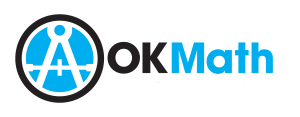25
2016
#OKMath Task Force Launches
Let’s Do This
 The #OKMath Task Force intends to unite Oklahoma math teachers in a collaborative effort to implement and refine rich, grade-specific tasks and WE NEED YOU! Join a us on a 9-week journey of learning with an entire state of teachers working toward becoming excellent teachers.
The #OKMath Task Force intends to unite Oklahoma math teachers in a collaborative effort to implement and refine rich, grade-specific tasks and WE NEED YOU! Join a us on a 9-week journey of learning with an entire state of teachers working toward becoming excellent teachers.
Check out the breakdown of the 9-week plan that will repeat throughout the year on the right.
The Warm Up
The initial 4 weeks will focus on warm ups or preparations for our math task SPRINT. Together as an #OKMath community of teachers, we will focus on combining the effective teaching practices along with the content and math actions processes of our new Oklahoma Academic Standards for Mathematics to implement math tasks with our students.
The Sprint
During the week of September 19, teachers across Oklahoma will simultaneously focus on implementing the same math task. (Can’t you already hear the great conversation that we will produce?)
The Cool Down
The last 4 weeks will provide a time to cool down and thoughtfully reflect on the teaching and learning that happened before, during, and after the task. We will also begin to plan for the next steps of connecting the learning for you and your students.
When We’re Done
When our short time together is all said and done, as a state we will have 13 refined math tasks directly aligned to our OAS-M standards that embody effective teaching practices and capture a shared vision for reaching the intent of the mathematics actions and processes.
Won’t you join with hundreds of other teachers around our state for this new and exciting experience? We promise that this experience will enhance your current math content knowledge while also affecting positive change in your classroom and across our state. Together as an #OKMath community of teachers, we will do great things!
Week #1 Warm Up - Posing Purposeful Questions
[This warm up only lasts about 15 minutes. If you have the endurance for it, you can also do the Heavy Lift set that should last about 20-30 minutes.]
Part 1) Stretch It Out
Effective teaching of mathematics uses purposeful questions to assess and advance students’ reasoning and sense making about important mathematical ideas and relationships. Keeping that in mind, look at the table below to get an idea of what this would like inside of a classroom.
After reading this table…
Q1) What do you notice about the teacher and student actions?
Q2) What do you wonder about the teacher and student actions?
Take a few moments to think through these two questions in relation to your own questioning techniques in your classroom. Feel free to share your thoughts and read the thoughts of others here:
Part 2) Cardio
To help think more about the questioning techniques we use in our classrooms, first read through Boaler and Brodie’s (2004) 9 different question types:
1. Gathering information, checking for a method, leading students through a method
- Want direct answer, usually right or wrong
- Rehearse known facts or procedures
- Enable students to state facts or procedures
2. Inserting terminology
- Once ideas are under discussion, enables correct mathematical language to be used to talk about them
3. Exploring mathematical meanings and relationships
- Points to underlying mathematical relationships and meanings
- Makes links between mathematical ideas
4. Probing; getting students to explain their thinking
- Clarifies student thinking
- Enables students to elaborate their thinking for their own benefit and for the class
5. Generating discussion
- Enables other members of class to contribute and comment on ideas under discussion
6. Linking and applying
- Points to relationship among mathematical ideas and mathematics and other areas of study or life
7. Extending thinking
- Extends the situation under discussion, where similar ideas may be used
8. Orienting and focusing
- Helps students focus on key elements or aspects of the situation in order to enable problem solving
9. Establishing context
- Talks about issues outside of math in order to enable links to be made with mathematics at a later point
Q3) Which of these levels resonate most with you?
Q4) Do you find yourself gravitating towards a couple of them because they are most comfortable or keep the peace in your classroom?
Part 3) Heavy Lift
So many times as teachers we are so busy with the demands of school that little time is allowed to reflect on that day in order to impact tomorrow. But, we all have a smartphone or device sitting within reach right now so it’s time to put it to use. Tomorrow, pull out your phone and start an audio recording sometime during a lesson in which you will be asking questions. This short segment just needs to be 15-30 minutes or short enough that you can listen during your plan period. Use the table above to analyze the types of questions you are asking your students. Keep track too… count how many times you ask questions and which kinds they were. Once you have completed this task, ponder the results.
Q5) What changes, if any, do you need to make in your question types so that your classroom can begin to resemble the student and teacher actions from above.
Stayed tuned for another warm-up activity next week!

 An article by Robbyn Glinsmann
An article by Robbyn Glinsmann








Is there a Week #2?
Steve,
There is a Week #2 post available at: http://okmathteachers.com/okmath-task-force-week-2/ and now a Week #3 post available at: http://okmathteachers.com/okmath-task-force-week-3/
We’d love to hear your feedback about how this is going for you! https://docs.google.com/forms/d/e/1FAIpQLSf-f5k8z5vHhKmkJdmPIuRAWSXMCjFUPCQGZ723UPVS3CKnVQ/viewform?c=0&w=1